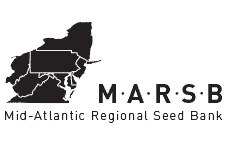1980 – 2004
Restoration ecology, coined by John Aber and Willian Jordan, emerged as a distinct discipline in ecology in the 1980’s as the scientific study of repairing disturbed ecosystems through human intervention or ecological restoration. As a complementary activity to conservation efforts, land managers, stewards and others have practiced ecological restoration for hundreds of years.
Immediately, the need for Native Plant Materials (NPM’s) was appreciated by early restorationists. Some of the first production of NPM’s was carried out by Environmental Concern, and their visionary founder, Dr. Ed Garbisch in St. Michaels, MD, in support of some of the first saltmarsh restoration work on the eastern seaboard.
Native plant materials use in restoration activities has significantly increased over the last couple of decades with little consideration for the selection of appropriate genetic stocks. Recognizing the genetic consequences of using non-local genetic stock in ecological restoration projects and the overall dearth of native plant materials available to restorationists in New York City and the region, the New York City Department of Parks and Recreation with the support from others established the Greenbelt Native Plant Center (GNPC) at a 13-acre greenhouse and nursery facility on Staten Island. The GNPC set out to provide native plants propagated from seeds sourced from local populations in support of conservation and restoration in the city and the region.
2006
The GNPC joins the international Millennium Seed Bank Project, Royal Botanic Gardens, Kew, and the national Seeds of Success program. Over the next four years, the GNPC staff along with the Brooklyn Botanic Garden work towards the goal of collecting 75 native plant species for long-term conservation from plant communities in decline in the New York City metropolitan area.
An active seed bank is established at the GNPC. With funding from the Royal Botanic Gardens, Kew, the GNPC converts its seed storage facility to meet international standards for mid-term seed storage. These conditions allow for maintaining viable seed for decades to meet land management needs. The addition of this new facility not only benefits NYC but also the region, as the GNPC offers to share its seed bank with regional public agencies and NGOs.
Recognizing the need for ecotypic bulk seed products, the GNPC initiates the Foundation Seed Program. Growing foundational seed (or so-called Generation (1) or G(1) seed) is the necessary first step in the production of agronomically increase bulk seed (or Generation (2) or G(2) seed). All field production starts with seed collected from wild populations (Generation (0) or G(0) seed). Starting with only four native warm-season grass species, foundation seed production expanded to include 75 species of forbs, grasses, and grass-like species, representing habitats ranging from woodland understories to grasslands. GNPC also pioneered the use of native annual G(1) seed as a critical tool for successful field establishment of new grassland plantings.
2008
In June 2008, a memorandum of understanding signed by the Bureau of Land Management, Chicago Botanic Garden, Lady Bird Johnson Wildflower Center, New England Wild Flower Society, New York City Department of Parks and Recreation, North Carolina Botanic Garden, and the Zoological Society of San Diego confirmed Seeds of Success as a national native seed collection program.
2009
The GNPC and the Brooklyn Botanic Garden complete the collection of seed of 75 native plant species. These collections are held in long-term conservation storage at the Millennium Seed Bank and the National Center for Genetic Resources Preservation in Fort Collins, Colorado.
2012
Twenty-five scientists and plant conservationists, from across the Mid-Atlantic States, gathered for a two-day meeting to lay the groundwork for the development of a regional seed bank. The New York City Department of Parks and Recreation with financial support from the US Botanic Garden and National Fish and Wildlife Foundation launched the Mid-Atlantic Regional Seed Bank (MARSB). In its first collection season, MARSB focuses its efforts on the collection of seed of early successional species and ash (Fraxinus) species threatened by the invasive Emerald Ash Borer.
2012-2014
Continued collection of the four species of Fraxinus found in NYS, for the US Forest Service.
2015-2017
With partners at the Chicago Botanic Garden, the New England Wild Flower Society (now the Native Plant Trust), the North Carolina Botanic Garden, and the NRCS, Cape May Plant Material Center, a three-year, post- Hurricane Sandy collection program called Seeds of Success East is undertaken in support of hurricane recovery and resiliency project up and down the East Coast. Funding is from the US Department of the Interior. Over 2,125 collections of coastal species were collected, banked, and made available to over 20 federal, state, and municipal projects.
2019
MARSB made 49 collection of Viburnum species from across New York State for the U.S. National Arboretum in support of conservation of Viburnum in the face of the on-going threat from the invasive Viburnum Leaf Beetle. Funding was provided by the Agricultural Research Service (ARS).
2021
In the first post-Covid pandemic field season, MARSB seed collectors make 150 seed collections across the eastern half of New York State, focusing on 12 common, early successional species widely useful for restoration, invasives control, and other land management applications.
2022
Having retired after 36 years with the NYC Department of Parks, including 25 years of operating the Greenbelt Native Plant Center, Edward Toth establishes the Mid Atlantic Regional Seed Bank as a standalone, not-for -profit, incorporated as MARSB, Inc. within the state of New York and seeks to continue and expand its programmatic work across the mid-Atlantic states.
